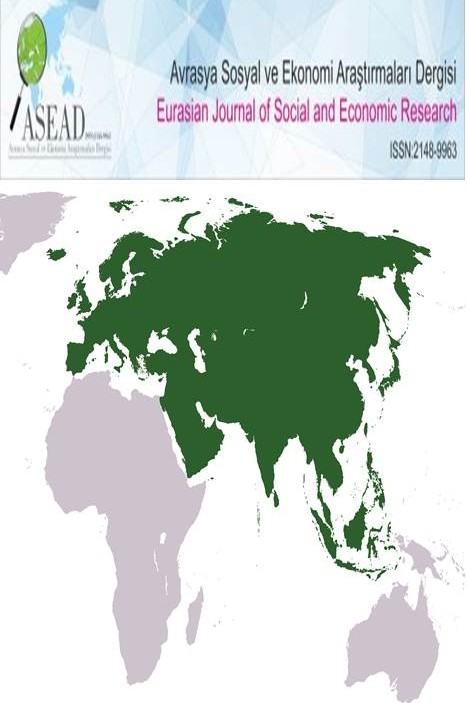DÜNYADA VE TÜRKİYE'DE ÖTANAZİYE YASAL YAKLAŞIM
Bu çalışmada açık kaynaklardan, uluslararası ve Türk yargı karalarından elde edilen veriler analiz edilerek, hasta hakları açısından ötanaziye nasıl yaklaşıldığı incelenmiştir.
Kavramsal olarak ötanazi, ölümün yakın ve kaçınılmaz olduğu ve tıp biliminin verilerine göre iyileşme olanağı olmayan acılar içindeki bir kişinin, tıbbi yollarla öldürülmesidir. Ya da tıbbi yardım kesilerek ölüme terk edilmesidir. TDK ötanaziyi ’’ölme hakkı’’ olarak tanımlanmıştır.
Ötanazi kişinin yaşam hakkından vazgeçme talebidir. Türk hukuk sistemine göre, kişinin vücudu üzerinde tasarruf yetkisi bulunmamaktadır (AY md 17). Ancak hastanın yaşadığı ızdırabın sona erdirilmesi için özerklik ve geleceğiyle ilgili karar verme hakkı çerçevesinde, hekimden yardım talebinde bulunma hakkı bulunmaktadır. Bu hak temel insan hakları dikkate alınarak sağlık hukuku bakımından daha da genişletilmelidir. Aksi halde hasta, hastalığın neden olduğu ağrı ve acıya yaşamının sonuna kadar katlanmak zorunda kalacaktır. Çalışma konusunun sağlık hukukunu ilgilendirmesi nedeniyle, hastanın yaşamının sonuna karar verme hakkının hukuki güvenceye kavuşturulması çalışmalarına katkı sunması amaçlanmıştır.
Anahtar Kelimeler:
Hasta, Hekim, Hasta Hakları, Ötanazi, Özerklik, Patient, Physician, Patient Rights, Euthanasia, Autonomy
LEGAL APPROACH TO EUTHANASIA IN TURKEY AND THE WORLD
In this study, the data obtained from open sources, international and Turkish judicial decisions were analyzed and how euthanasia was approached in terms of patient rights was examined.
Conceptually, euthanasia is the medical killing of a person in pain, where death is imminent and inevitable, and according to medical science, there is no cure. Or medical aid is cut off and left to die. TDK defined euthanasia as "the right to die". Euthanasia is a request to give up one's right to life. According to the Turkish legal system, a person has no authority to dispose of his body (AY art. 17). However, the patient has the right to seek help from the physician within the framework of his autonomy and right to decide about his future in order to end his suffering. This right should be further expanded in terms of health law, taking into account basic human rights. Otherwise, the patient will have to endure the pain and suffering caused by the disease for the rest of his life. Due to the fact that the subject of the study concerns health law, it is aimed to contribute to the studies of legal assurance of the right of the patient to decide on the end of his life.
Keywords:
Patient, Physician, Patient Rights, Euthanasia, Autonomy,
___
- Altunkas, A (2017). III National Health Law, Right to Self-Determination and Euthanasia Symposium “Types of Euthanasia and Evaluation of Euthanasia in Terms of Turkish Criminal Law” Seçkin Publishing, 1, 75-77.
- Beşiri, A (2009). Euthanasia and the Right to Life, TBB Magazine, 86,188-203.
- Bertrand, R. (1983). West (Trans. SENCER, Muammer) "History of Philosophy, Antiquity/Medieval/New Age" Say Publishing, 3, 501,502.
- Özcan, G.B. & Özel, Ç (2007) Personal Rights - Some Evaluations Regarding the Obligation of the Physician to Inform the Patient and the Informed Consent in the Legal Relationship Due to Medical Intervention in the Context of Patient Rights, Hacettepe Health Administration Journal, 10, (1), 50-72.
- Kamay, B. T (1952). Euthanasia (Killing a Patient Coming to Death Without Pain), Ankara Bar Association Journal, 8, ( 93-94), 1-6.
- Serdaroğlu B, E (2016). Euthanasia- Right to Die, Marmara University Faculty of Law, Journal of Legal Studies, 22(3), 459-487.
- Şenses, E (2008), Euthanasia as a Patient Right, Journal of Crime and Punishment, 4 (İstanbul October-November December), 215.
- Gurcan, E. C(2011).Euthanasia: An Evaluation of the Right to Life” AUHFD, 60(2), 255-280.
- Özkara, E (2008). A Different Perspective on Euthanasia: Euthanasia Practice in Belgium and the Situation in Our Country, TBB Journal, 78, 105-122.
- Gönenc, F.İ(2017) Personality Protection and Euthanasia ''III National Health Law Right to Self-Determination and Symposium, (Ed. TACİR, Hamide, ALTUNKAŞ, Aysun) Seçkin Publishing, (1), 104.
- GÜVEN, Murat (2017)A General Evaluation of the Right to Euthanasia, TBB Journal, 131, 32- 55.
- Aktas B, H (2022). Legal Approach to Euthanasia in Turkey and in the World, PhD Thesis, Istanbul Medipol University Institute of Social Sciences, Istanbul.
- Maurach, Reinhart/ SCHROEDER, Friedrich- Christian/ MAIWALD, Manfred, Strafreccht Besonderer Teil, Teil Band 1, 9. Aufl., Heidelberg 2003.
- Sulu, M (2011). On Euthanasia MUHF-HAD, 22(2), 552-574; Artuk, M. E (1992) Euthanasia, Journal of the Supreme Court, 18(3), 308, 309.
- Dural, M & Öğüz, T (2013). Right to Personality – Personal Assets Worth Preserving and Protection of Personality, Turkish Private Law Volume II Persons Law, Filiz Publishing, 14, 104,105.
- Özen, M &Ekici, M. S (2010) Euthanasia, Ankara Bar Association Journal, 68 (4), 25-36.
- Artuk, M. E &Yenidünya, A. C (1992), Euthanasia",18(3), 297-319.
- Bilgin, N (2013). Euthanasia. Definition and History, Lokman Hekim Journal, 3 (2), 25-31.
- Kaşıkçı, O (2008). Euthanasia in the History of Law, Turkish Legal History Studies, 6, 85-99.
- Dönmezer, S & Erman, S (2019) Theoretical and Applied Criminal Law” Der Publishing, 2(14), 54, 55.
- Inceoglu, S (1999) The Right to Die, Details Spring, 1.
- Ünver, Y (2016) IV. Turkey –Slovenia Comparative Law Symposium, Personal Rights, Seçkin Puplishing, 1, 88.
- Yanardağ, Z., (2016) “THE PATIENT'S RIGHTS COMMITTEE MEMBERS' VIEW OF PATIENT'S RIGHTS: THE CASE OF ISTANBUL” Community and Social Service, 27(2), 29-45.
- Yayın Aralığı: Yılda 4 Sayı
- Başlangıç: 2014
- Yayıncı: İrfan TÜRKOĞLU
Sayıdaki Diğer Makaleler
FAHRETTİN ER-RÂZÎ’NİN KIRÂAT ANLAYIŞI
PESTİSİT KULLANIMINDA ÜRETİCİLERİN BİLGİ DÜZEYİ: DİYARBAKIR İLİ ÖRNEĞİ
Şenay SEVİM, Murat BOYACI, Murat GÜLMEZ, Erdal ATEŞ, Uygar Serkan KARAKAŞ, Cahit KAYA, Aysel BARS ORAK
Meri TAKSİ DEVECİYAN, Hazal Koray ALAY
POPULATION MOVEMENTS AND THEIR REASONS IN TRABZON CITY AND OF DISTRICT IN THE OTTOMAN PERIOD
Saltuk AĞIRALİOĞLU, Necati AĞIRALİOĞLU
MEDICAL WASTE MANAGEMENT AND MANAGEMENT OF WASTE DURING THE COVID-19 PANDEMIC
Gamze MERCAN, Ebru AĞAÇKESEN, İrem BÜYÜKER, Eray BAYAR
İLLÜSTRASYONUN MEKÂNIN GÖRSEL İLETİŞİMİNE KATKISI
SÜRDÜRÜLEBİLİRLİK: SU VE SUYUN ÖNEMİ
GAZALİ'NİN İHYA ADLI KİTABINDA YER ALAN ŞARKİ DİNLEME HUSUSUNUN MUKAYESELİ OLARAK DEĞERLENDİRİLMESİ
